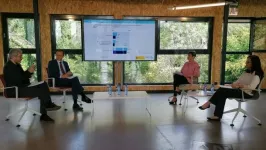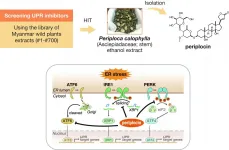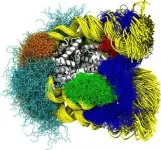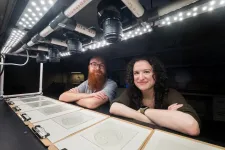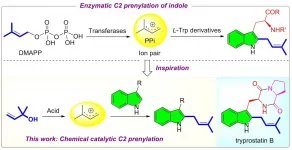(Press-News.org) The Spanish Foundation for Science and Technology (FECYT) has presented this week at the headquarters of the National Science and Technology Museum in Madrid the main results of the 10th Social Perception of Science Survey carried out in 2020.
The presentation was attended by Pedro Duque, Minister of Science and Innovation, Josep Lobera, Professor of Sociology at the Autonomous University of Madrid (UAM) and scientific co-director of the Survey and the subsequent study, and Rosa Capeáns, Director of the Scientific Culture and Innovation Department of FECYT. Pampa García, Editor-in-Chief of the SINC Agency, moderated a debate in which the results were presented in six blocks: Interest in scientific and technological issues; Image of scientific and technological research in Spain; Science and technology: media; Use of therapies without scientific evidence; Robotisation and artificial intelligence; and Climate change.
Among the survey results, a large majority of the Spanish population believe that more should be invested in science and technology at all levels of public administration and private companies. This demand is higher in relation to the Spanish government, supported by 85 % of the population. Eighty percent believe that regional governments should increase investment in science and technology research, along with 71% who believe that local administrations and private companies should do so.
In terms of interest in science and technology issues, the survey reveals that around one in seven people (14 %) spontaneously express an interest in science and technology issues, a similar proportion to those who express an interest in economy (16 %), education (15 %) and environment (10 %). This is similar to the interest detected in the 2018 survey (16 %).
A spontaneously declared interest in science and technology continues to be higher among men (19 %) than among women (10 %). However, women show a greater interest in topics with a very direct relationship to science and technology, such as medicine and health. Thirty-two percent of women show a spontaneous interest in these issues, compared to 20 % among men. Women were also more interested in issues related to the pandemic (50 %, compared to 43 % of men), a central theme this year and closely linked to the development of scientific evidence.
Use of therapies without scientific evidence
The survey includes a specific module dedicated to researching the social perception of some aspects of science applied to health. In a previous press release in February, the results concerning attitudes towards vaccination were explained.
On the other hand, one in six Spaniards (17 %) say they trust the beneficial effects of homeopathy, eight percentage points less than two years ago, while 11 % trust reiki (the laying on of hands), five percentage points less than two years ago. This decline seems to be linked to information campaigns on these treatments but also to a general decrease in confidence, which extends to conventional treatments such as vaccination.
Robotisation and artificial intelligence
The population is divided on the risk-benefit balance of the applications of robotisation and artificial intelligence. Overall, 34 % of the population believe that the benefits of job robotisation outweigh the risks, while 53 % believe that the risks outweigh the benefits and 13 % have no opinion.
Science and technology: media
Television continues to play an important role as a channel for scientific information at all ages. Seventy-two percent of the population say that they obtain information on science and technology-related issues through this medium. Television has played a particularly important role in information related to covid-19: it has been the main source of information on the disease for 65 % of the population, followed by the Internet for 25 %.
The survey has shown in recent editions that the Internet has established itself as a fundamental means of scientific information and communication in Spain. In this edition, 61 % of the population say that they get information about science and technology on the Internet, mainly through social networks and through the digital versions of the general media.
INFORMATION:
Survey fact sheet:
For the 10th Social Perception of Science and Technology Survey, 7,953 interviews have been carried out, distributed in each Autonomous Community in Spain. The population studied are people aged 15 and over who have been residents in Spain for 5 years or more.
The information collection work took place from 14 July to 19 October 2020 (no fieldwork was carried out in the month of August). The sampling error for the sample as a whole is ±1.12 percentage points for a 95 % confidence level.
In the present study, Dr. Hidetoshi Hayashi (Professor, Nagoya City University) and collaborators screened small-molecule compounds that suppress UPR, using Myanmar wild plant extracts library. The screening system to track X-box binding protein 1 (XBP1) splicing activity revealed that the ethanol extract of the Periploca calophylla stem inhibited the inositol-requiring enzyme 1 (IRE1)-XBP1 pathway. They isolated and identified periplocin as a potent inhibitor of the IRE1-XBP1 axis. Periplocin also suppressed other UPR axes, protein kinase R-like endoplasmic reticulum kinase (PERK), and activating transcription ...
Researchers from the Hubrecht Institute in Utrecht (The Netherlands) and the Max Planck Institute for Molecular Biomedicine in Münster (Germany) used computer simulations to reveal in atomic detail how a short piece of DNA opens while it is tightly wrapped around the proteins that package our genome. These simulations provide unprecedented insights into the mechanisms that regulate gene expression. The results were published in PLOS Computational Biology on the 3rd of June, 2021.
Every cell in the body contains two meters of DNA. In order to fit all the DNA ...
Health has always been affected by climate and weather, but is increasingly clear that the change in climate is a significant threat to human health. The World Health Organization (WHO) estimates that 24% of global deaths are linked to environmental factors [1]. Climate change and pollution can lead to undernutrition, mental disorders, and noncommunicable diseases including chronic kidney disease and acute kidney injury [2].
The burden of addressing the death and disability associated with climate change falls to nephrologists and other healthcare professionals. At the same time, the healthcare sector makes a major ...
SGLT2 inhibitors (gliflozins) were developed as oral antidiabetics. They enhance urinary glucose excretion by inhibiting SGLT-2 (sodium-dependent glucose co-transporter-2) in the renal tubuli. The discovery of kidney benefits beyond the lowering of blood sugar has been made by Professor Christoph Wanner from Germany: The EMPA-REG OUTCOME study [2] initially showed that the rate of cardiovascular events in type 2 diabetic pa-tients is significantly reduced if the SGLT2 inhibitor empagliflozin is administered. Kidney function in diabetics who already had diabetic nephropathy was also found to benefit sig-nificantly from the treatment ...
HOUSTON - (June 7, 2021) - If identical versions of 20 people lived out their lives in dozens of different worlds, would the same people be popular in each world?
If you substitute "fruit flies" for "people" in that question, you have a fair description of a Rice University study showing that the evolution of social structures and the positions of individuals within those structures are based partly on genetics.
Cloned fruit flies played a starring role in the study that researchers jokingly likened to "The Truman Show," with video cameras observing how the flies behaved in a controlled environment.
In the study published online this week in Nature Communications, Rice bioscientists Eric Wice and Julia Saltz ...
The kidneys are a target organ of COVID-19 and are affected very early in the course. However, this is precisely where there is strong prognostic potential: As early as last spring, COVID-19-associated nephritis was identified as an early warning signal for severe courses of the infectious disease and studies to that effect were published [1]. In that regard, the research group led by Professor Oliver Gross, Department of Nephrology and Rheumatology at Göttingen University Medical Center (UMG), screened 223 patients in a study and included 145 of them as a predictive cohort. Study endpoints were ICU admission or mortality. As a result, early urinary changes ...
It was clear at a relatively early stage of the pandemic that SARS-CoV-2 causes a wide range of symptoms; in addition to typical respiratory symptoms, patients also had neurological symptoms (starting with anosmia), gastrointestinal symptoms, elevated liver values, and renal, urinary or hematological changes, for example. The fact that such findings occurred not only in severely ill patients with general organ dysfunction suggested that the virus may potentially cause disorders in various organs directly, i.e. that it causes a multi-system disease.
In spring 2020, at the very beginning of the pandemic, the authorities in Hamburg ordered autopsies be performed on all patients who had died with COVID-19. This resulted in one of the ...
Various viruses and bacteria have long been known to cause autoimmune diseases where there is such a predisposition. This phenomenon also seems to play a major role in SARS-CoV-2, especially in severe courses. The body's own immune cells are activated, with the formation of autoantibodies that attack the body's own healthy cell structures (proteins, autoantigens); deposits of immune complexes can then trigger severe inflammatory processes and cell destruction in the body.
Some nephrological diseases are likewise of autoimmunological etiology, one example being systemic lupus erythematosus (SLE), a chronic, mostly relapsing-remitting inflammatory disease with life-threatening ...
Terpenoids are omnipresent in almost all living organisms. Prenylated indoles are prominent representatives that usually display potent medicinal properties (e.g. tryprostatin B). Therefore, significant efforts have been devoted to indole prenylation over the past decades. The known protocols often require a multi-step procedure and rely on the use of stoichiometric promoters. From the viewpoint of step- and atom-economy, developing a direct catalytic C2 prenylation of indoles is highly desirable yet challenging, because the nucleophilicity of C2 site is weaker than that of other two positions ...
Consuming large amounts of daily caffeine may increase the risk of glaucoma more than three-fold for those with a genetic predisposition to higher eye pressure according to an international, multi-center study. The research led by the Icahn School of Medicine at Mount Sinai is the first to demonstrate a dietary - genetic interaction in glaucoma. The study results published in the June print issue of Ophthalmology may suggest patients with a strong family history of glaucoma should cut down on caffeine intake.
The study is important because glaucoma is the leading cause of blindness in the United States. It looks at the impact of caffeine intake on glaucoma, ...
